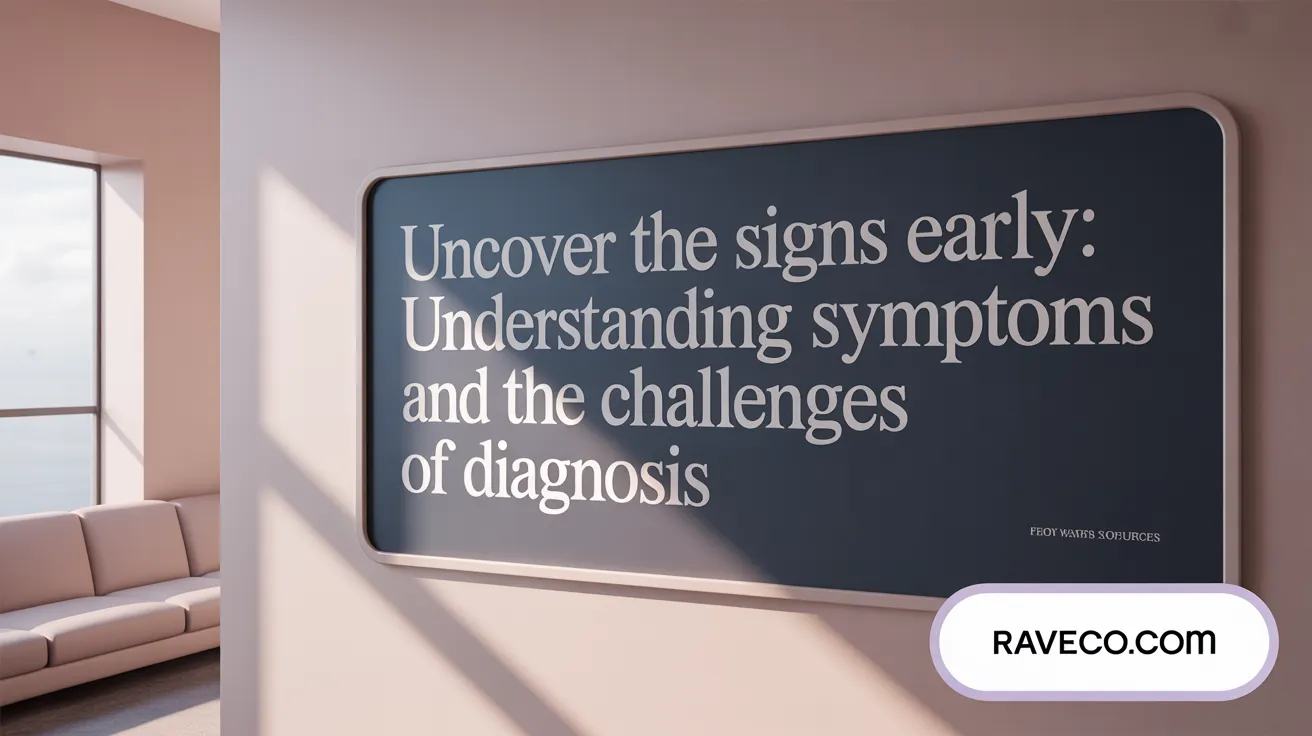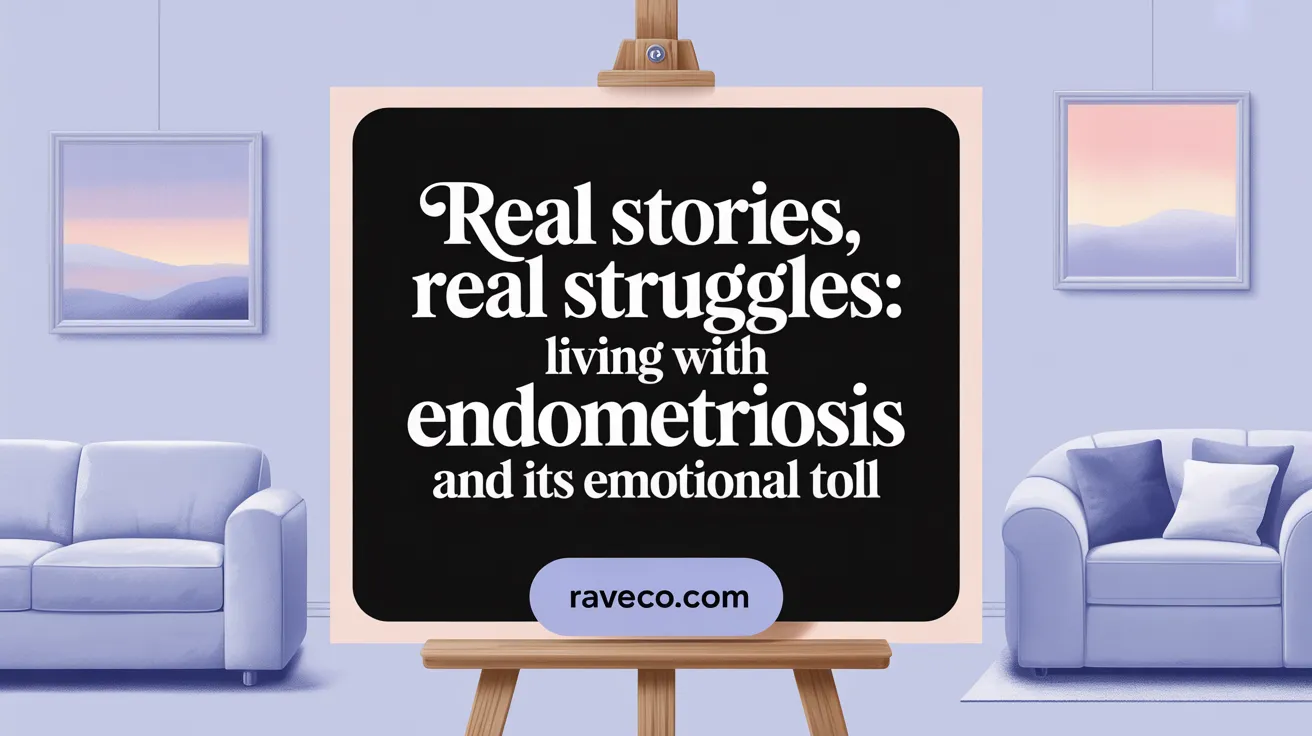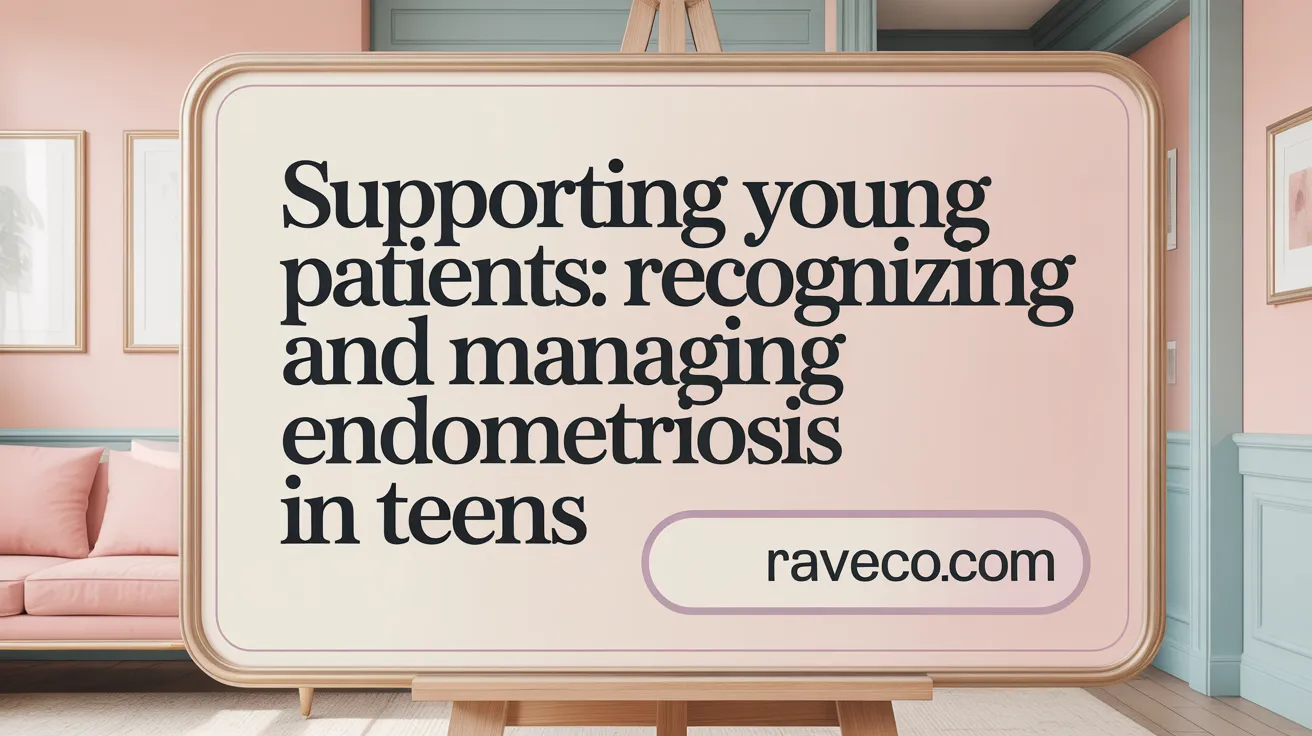Bridging Genetics and Prenatal Care: Empowering Women Through Counseling and Screening

Understanding Endometriosis Through Real Voices
Endometriosis, a chronic and often misunderstood condition, affects millions globally, causing significant physical and emotional challenges. Through the real-life stories of women like Iva, Tegan, and others, this article explores the complexities of living with endometriosis, highlighting the diagnostic hurdles, symptom management, emotional toll, and the indispensable role of support and advocacy in navigating this condition.
Early Symptoms and Delayed Diagnoses in Endometriosis

How do early symptoms manifest and what challenges exist in diagnosing endometriosis?
Endometriosis often begins to show symptoms during adolescence or young adulthood. Teen girls and young women commonly experience severe menstrual cramps, chronic pelvic pain, heavy or irregular periods, painful intercourse, and sometimes gastrointestinal issues. These early symptoms can also include fatigue and pain during bowel movements or urination (Symptoms of endometriosis in young women, Endometriosis in teens and preteens, Symptoms of Endometriosis).
Diagnosing endometriosis early is challenging. One major hurdle is that symptoms may be dismissed as typical menstrual pain, leading to normalization by patients, families, and even healthcare providers. Medical professionals may lack awareness or consider symptoms psychosomatic, contributing to significant delays in diagnosis (Challenges in diagnosing endometriosis, Diagnostic delay in endometriosis, Diagnostic challenges and healthcare awareness).
The standard and definitive diagnostic method for endometriosis is laparoscopy—a minimally invasive surgery that allows direct visualization and biopsy of the abnormal endometrial-like tissue outside the uterus (What is laparoscopy?, Laparoscopy for Endometriosis Diagnosis, Surgical Diagnosis of Endometriosis). However, because laparoscopy is invasive, many patients undergo years of symptom management without a confirmed diagnosis (Diagnosis delays in endometriosis, Delayed Diagnosis of Endometriosis.
This diagnostic delay averages between 7 to 12 years worldwide, extending patients' suffering and negatively impacting their physical and mental health, social life, work productivity, and fertility planning (Delayed diagnosis of endometriosis, Endometriosis impact on quality of life, Challenges in Diagnosing Endometriosis. Early detection and diagnosis remain vital to managing symptoms effectively and improving quality of life for those affected by this chronic condition (Benefits of early diagnosis, Early diagnosis importance.
Personal Stories: Living With Persistent Pain and Uncertainty

What are the common experiences of women living with endometriosis?
Women living with endometriosis often describe ongoing, severe pelvic pain and intense menstrual cramps that deeply affect their daily routines. Many find their symptoms challenging enough to interfere with work, social activities, and mobility, sometimes requiring rest or pain relief during the day. The pain can be cyclical, worsening during menstrual periods, and may disrupt sleep (Symptoms of Endometriosis, Living With Endometriosis).
Emotional struggles are also a significant part of their experience. Anxiety about the impact of the disease on fertility is common, especially when family history includes reproductive health challenges. Feelings of frustration, grief, and mental health concerns like depression often accompany the physical symptoms (Endometriosis and Infertility, Mental health support for endometriosis patients).
A family history of conditions like polycystic ovaries or infertility can heighten concerns and influence how women perceive and understand their illness. This background sometimes complicates diagnosis and shapes treatment decisions (Family history of polycystic ovaries, Family support for endometriosis patients.
Surgical confirmation through laparoscopy is widely reported as a crucial step. This minimally invasive procedure not only confirms the presence of endometrial tissue outside the uterus but also assesses the spread and severity of the disease. Based on surgical findings, women opt for various treatments, including hormonal therapies, excision surgeries, or in severe cases, more extensive procedures. These decisions are influenced by symptom severity, fertility goals, and overall health (What is laparoscopy?, Surgical treatment for endometriosis, Hormonal therapy for endometriosis).
Patient stories emphasize the importance of validation and support throughout the journey, revealing the need for comprehensive care that addresses both physical and emotional aspects of living with endometriosis (Endometriosis patient stories, Emotional and physical struggles with endometriosis, Mental health and endometriosis).
The Role of Surgery and Medical Treatments in Managing Endometriosis

What are the current surgical and medical approaches to treating endometriosis?
Endometriosis treatment typically involves both surgical and medical approaches aimed at managing symptoms and improving quality of life.
Laparoscopy and Excision Surgery:
Laparoscopy serves as the gold standard for diagnosing endometriosis, allowing direct visualization and biopsy of endometrial-like tissue outside the uterus. Surgeons can perform excision surgery during laparoscopy to remove visible lesions, adhesions, and scar tissue. This surgery often reduces pain significantly and improves fertility prospects but is not a cure, as lesions may recur.
Hormonal Therapies and Pain Management:
Hormonal treatments, including combined oral contraceptives, progestins, and GnRH agonists, help suppress or regulate menstrual cycles, reducing the growth and activity of endometrial tissue. Pain relief commonly involves NSAIDs and sometimes neuropathic pain medications. Hormonal therapies also provide symptom relief but do not eradicate the disease. For more details on hormonal therapy for endometriosis, and managing endometriosis pain see these resources.
Limitations of Current Treatments:
Both medical and surgical treatments are primarily symptom-focused. Hormonal therapies are suppressive, not curative, and often unsuitable for women attempting to conceive. Surgery carries risks such as recurrence and surgical morbidity. Due to the complexity of endometriosis pain, which involves nerves and muscles, integrated and multidisciplinary management approaches are often necessary.
Hysterectomy as a Last-Resort Option:
In severe or refractory cases, especially when fertility is no longer desired, a hysterectomy may be performed. Whenever possible, ovaries are preserved to avoid early menopause. Hysterectomy can significantly reduce pain but does not guarantee complete symptom resolution, and is reserved for last-resort treatment. More information can be found on hysterectomy for endometriosis.
Overall, managing endometriosis requires personalized treatment plans combining surgery, hormonal therapy, pain management, and supportive care tailored to the individual's symptoms and reproductive goals. For a comprehensive overview, see Endometriosis Diagnosis and Treatment and Treatment Options for Endometriosis.
Multidisciplinary Care and Self-Management Strategies
How do multidisciplinary care and self-management aid in coping with endometriosis?
A comprehensive care plan for endometriosis often involves a multidisciplinary approach to endometriosis that integrates medical treatments with supportive therapies. This includes pain management through medications, physical therapies such as pelvic physiotherapy benefits, and mental health support like counseling and cognitive behavioral therapy and endometriosis to address the emotional impact of chronic pain.
Integrated approaches involving pain management, mental health support, and physical therapy
Pain related to endometriosis is complex, involving inflammation, nerve sensitization, and muscle spasm. Managing this requires collaboration between gynecologists, physical therapists, and mental health professionals to tailor treatments that reduce pain and improve function. Pelvic physiotherapy helps relax spastic muscles and improve blood flow, which can ease symptoms.
Lifestyle and dietary adjustments
Lifestyle changes, especially adopting an anti-inflammatory diet for endometriosis, rich in omega-3 fatty acids, fruits, vegetables, and whole grains, help reduce systemic inflammation. Regular, gentle exercise such as swimming or yoga can decrease pain and fatigue while boosting mood. Heat therapy like warm pads provides symptomatic relief during episodes of intense pain.
Alternative therapies like acupuncture and yoga
Complementary therapies like acupuncture for endometriosis pain have shown promise in reducing endometriosis pain and improving quality of life. Yoga supports both physical flexibility and stress reduction, which can lessen symptom severity and enhance emotional resilience.
Importance of education and patient empowerment
Education about endometriosis equips patients to identify pain triggers, seek appropriate care, and advocate for individualized treatment plans. Understanding the chronic nature of the condition fosters acceptance and encourages positive coping strategies, improving overall well-being and quality of life.
Emotional and Social Impact: The Psychological Toll of Endometriosis

What psychological and social challenges do women with endometriosis face?
Women with endometriosis frequently endure significant mental health challenges such as depression and anxiety, largely driven by chronic pain and prolonged diagnostic delays. This emotional distress is intensified by experiences of medical dismissal and gaslighting, where healthcare providers sometimes minimize or overlook patient symptoms, leaving women feeling unheard and isolated. For more on the psychological stress in endometriosis patients, see How Endometriosis Can Impact Mental Health.
These psychological burdens extend into the social sphere, affecting relationships and work life. Chronic pain and fatigue may limit social participation and strain intimate partnerships or family dynamics. Patients often report feelings of loneliness and frustration that come from not being believed or understood. Insights into these challenges are detailed in Challenges of living with endometriosis.
Importance of support networks and patient advocacy
Support systems play a crucial role in helping women manage these emotional and social challenges. Encouragement and understanding from family and friends provide emotional relief and foster resilience. Moreover, patient advocacy groups raise awareness, combat stigma, and promote education about endometriosis, which empowers sufferers to seek appropriate care. Learn more about Support networks for women with endometriosis and Endometriosis patient stories and advocacy.
Role of peer support groups and counseling
Peer support groups offer safe spaces where patients can share experiences, coping strategies, and practical advice, helping to normalize their feelings and reduce isolation. Professional counseling and mental health support are also recommended to address anxiety, depression, and the ongoing psychological impact of living with a chronic condition. See Therapy and mental health support for endometriosis and Psychosocial support for endometriosis.
Together, these networks and services create a foundation for improved mental well-being and encourage more proactive healthcare engagement, ultimately supporting better quality of life for women living with endometriosis. Additional coping strategies and emotional support approaches can be found at Coping techniques for endometriosis and Managing chronic pain and stress in endometriosis.
The Impact of Endometriosis on Fertility and Life Planning
How does endometriosis affect fertility and what considerations do patients have?
Endometriosis affects fertility by causing tissue similar to the uterine lining to grow outside the uterus, often on reproductive organs like the ovaries and fallopian tubes. This growth can lead to scarring, adhesions, and inflammation, which may impair the function of these organs and complicate conception. Approximately 50% of women facing infertility have endometriosis as a contributing factor (Endometriosis overview, Endometriosis and infertility).
For many patients, concerns about fertility heavily influence their treatment decisions. Women like Tegan, who face severe symptoms and have a family history of reproductive challenges, often weigh early medical interventions such as laparoscopic surgery or hormonal therapies to manage endometriosis and preserve fertility. These options aim to reduce symptoms, slow disease progression, and improve reproductive outcomes (Endometriosis treatments, Surgical treatment for endometriosis).
Emotional distress related to family planning is common. The uncertainty about conception ability and possible recurrent pain can cause anxiety and affect life plans. Multidisciplinary care provides comprehensive support, involving gynecologists, fertility specialists, mental health professionals, and pain management experts to address both physical and emotional needs (Mental health support for endometriosis patients, Managing endometriosis pain).
Early diagnosis and intervention are vital. Prompt treatment can help minimize damage to reproductive organs and offer greater fertility preservation. Counseling on assisted reproductive technologies is often part of the care plan, empowering patients to make informed decisions about their futures (Diagnosis of endometriosis, Endometriosis diagnosis improvements, Endometriosis treatment options).
Youth and Endometriosis: Addressing Challenges in Younger Patients

Endometriosis in Teens and Preteens
Endometriosis is often thought of as an adult condition, but it can affect younger individuals, including teens and preteens. In these young patients, tissue similar to the uterine lining grows outside the uterus—in places like ovaries, fallopian tubes, and pelvic tissues—leading to symptoms such as pelvic pain and painful menstrual periods.
Symptom Recognition and Validation in Young Patients
One of the unique challenges is that symptoms in young patients are often dismissed or normalized as typical menstrual pain. This delay in recognition can prolong suffering and complicate treatment. Validation of their pain by family members and healthcare providers is crucial for early diagnosis and proper management.
Family Involvement and Communication
Family support plays a vital role in managing endometriosis in younger patients. Open conversations about menstruation and the experience of pain help young individuals feel believed and supported, reducing emotional distress and encouraging timely medical consultation.
Treatment Adaptations for Younger Individuals
Management strategies for adolescents include hormonal treatments such as birth control to ease symptoms. If symptoms persist or worsen, minimally invasive laparoscopic surgery may be performed to diagnose and remove endometrial tissue. Besides physical treatments, mental health support through counseling can assist in coping with chronic pain and its psychological impacts.
Supporting Young Patients with Endometriosis
Creating a supportive environment that acknowledges the physical and emotional aspects of endometriosis in youth helps optimize care. Early intervention, family involvement, and individualized treatments contribute to better symptom control and improved quality of life for young patients.
Advocacy, Awareness, and the Path Towards Improved Care
How do advocacy and research contribute to better outcomes for women with endometriosis?
Advocacy plays a vital role in raising awareness about endometriosis, helping to reduce the stigma often associated with women's pain and reproductive health issues. This empowers women to seek timely diagnosis and appropriate treatments, which is crucial given the typical diagnostic delay of 7 to 12 years.
Research into endometriosis focuses on developing innovative diagnostic tools, such as molecular biomarkers and noninvasive tests, aiming to shorten this delay and improve early detection. These advancements promise more accurate diagnosis without always needing invasive surgery like laparoscopy.
Improving healthcare provider education is essential to enhance understanding, reduce dismissive attitudes, and support empathetic patient care. Knowledgeable providers can offer better diagnosis and personalized treatment plans.
Community support networks and patient organizations form a backbone of empowerment for those affected. They provide essential education, foster peer support, and spread resources that improve coping and quality of life.
Together, advocacy, research, education, and community support create a multifaceted approach that improves health outcomes and the lived experience of women with endometriosis.
Living Beyond the Pain: Hope and Resilience
The journeys of women living with endometriosis reveal profound challenges—from delayed diagnoses and relentless pain to emotional struggles and concerns about fertility. Yet, these stories also highlight the transformative power of support, education, and comprehensive care. With advances in multidisciplinary treatment, growing advocacy, and heightened awareness, there is hope for improved quality of life. Empowered by knowledge and community, many women not only manage their symptoms but also find resilience and purpose, inspiring others navigating the complexities of endometriosis.





.png)